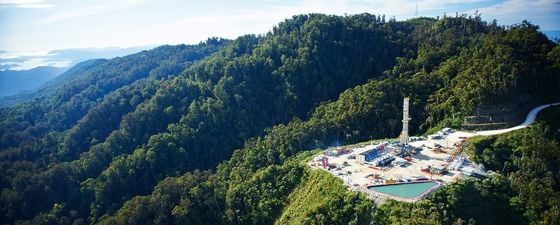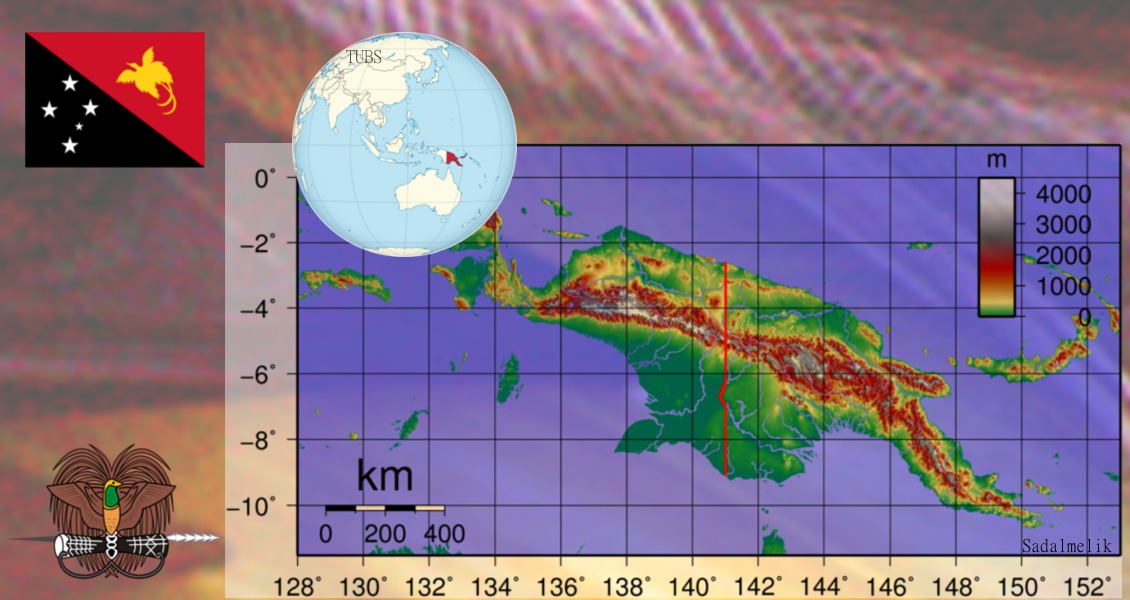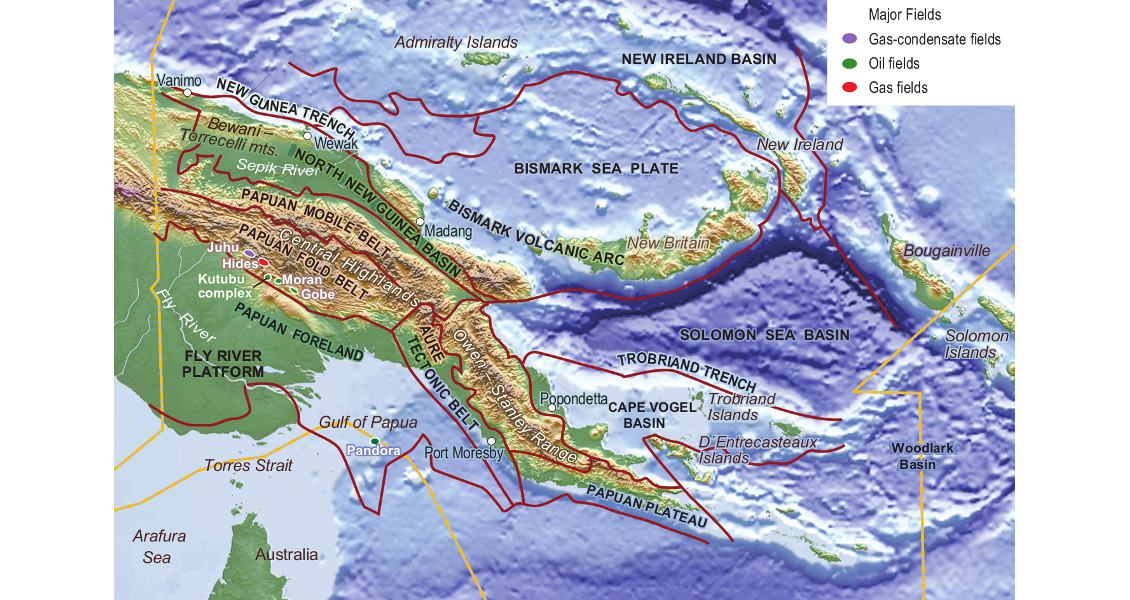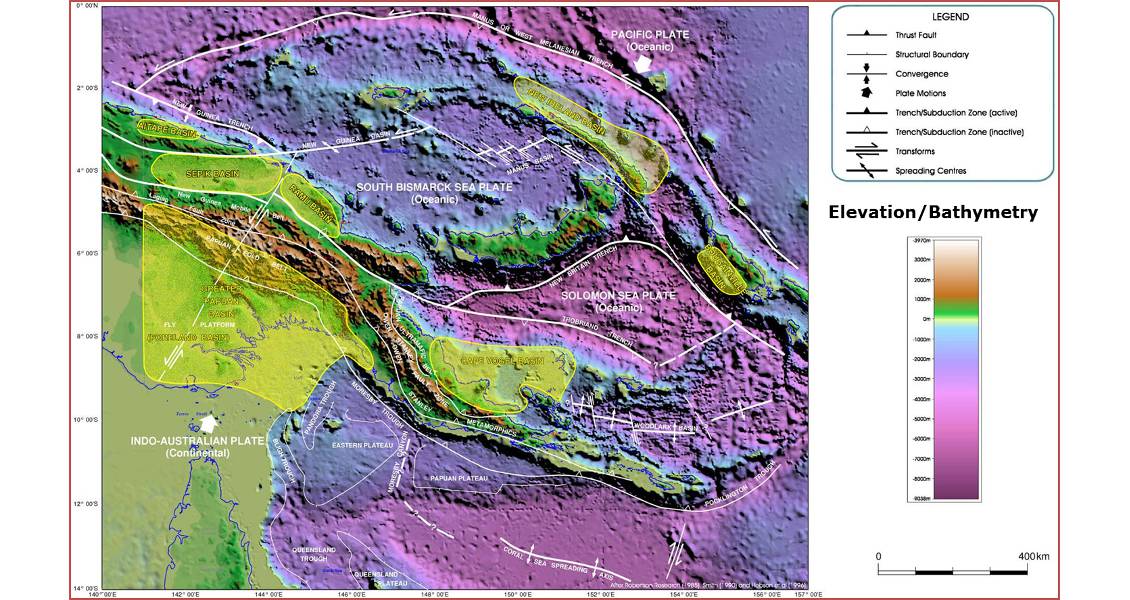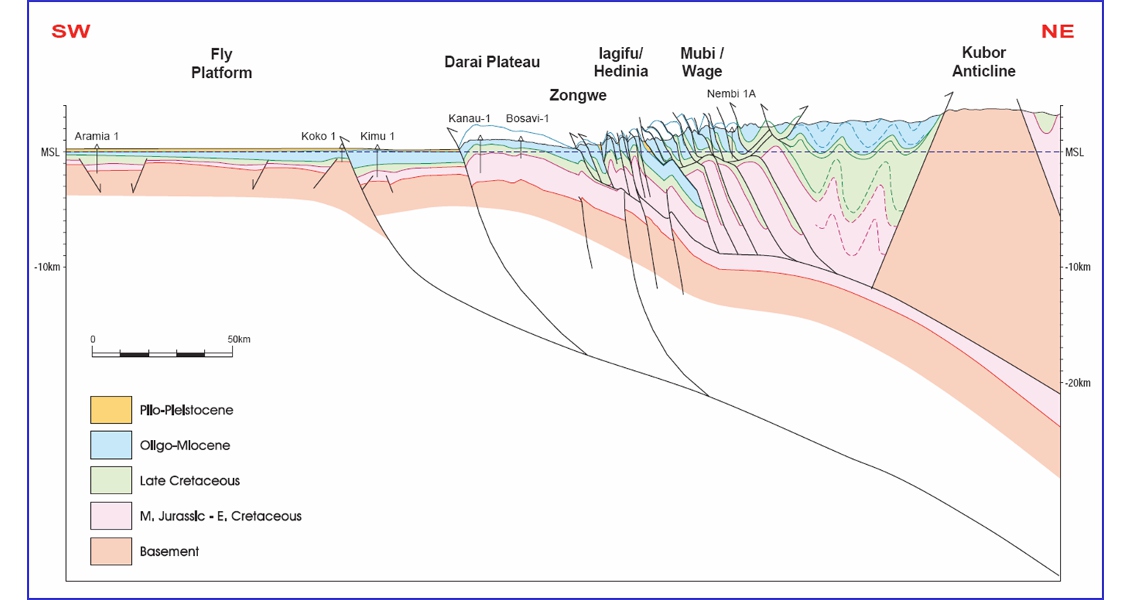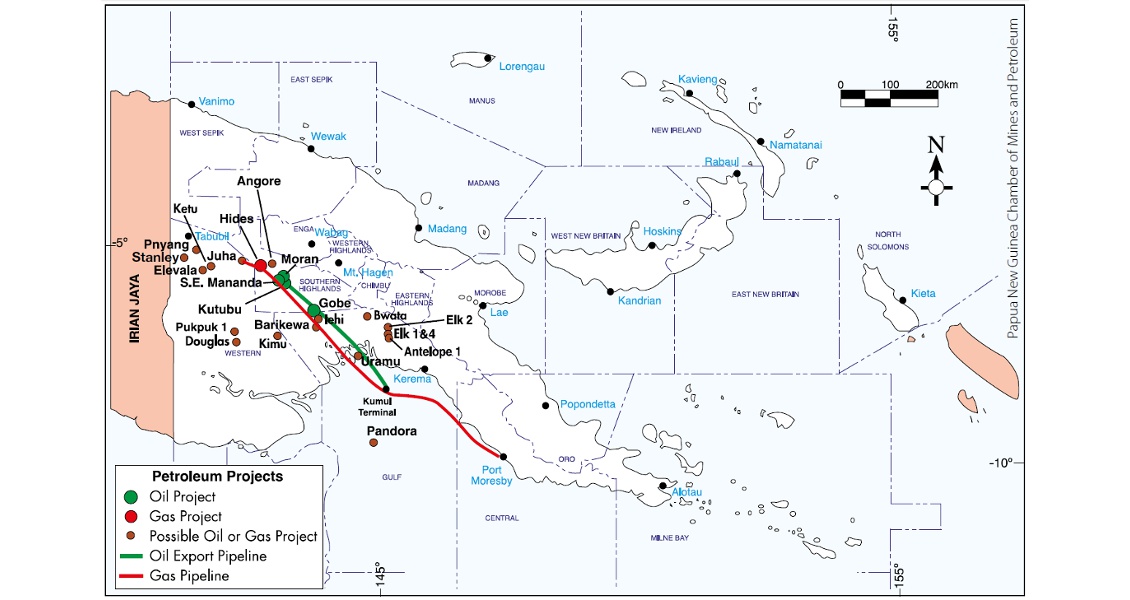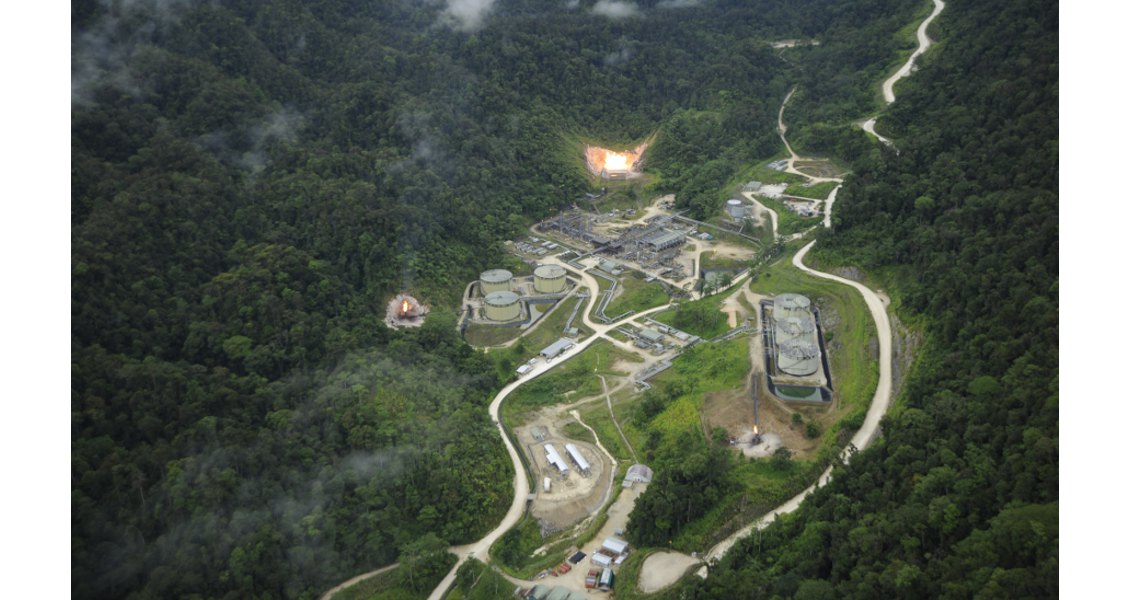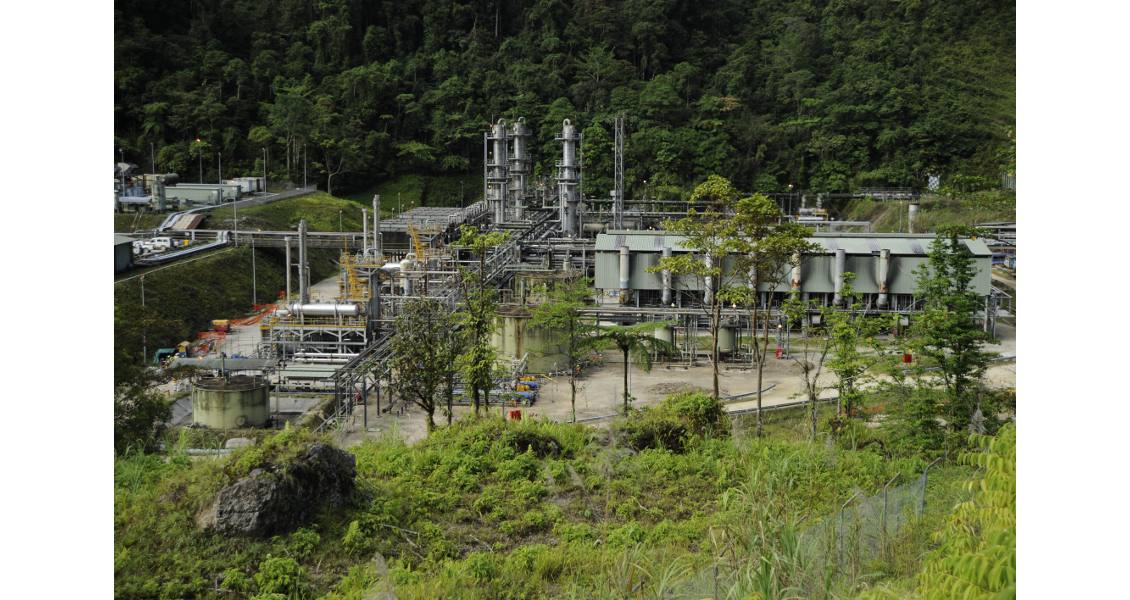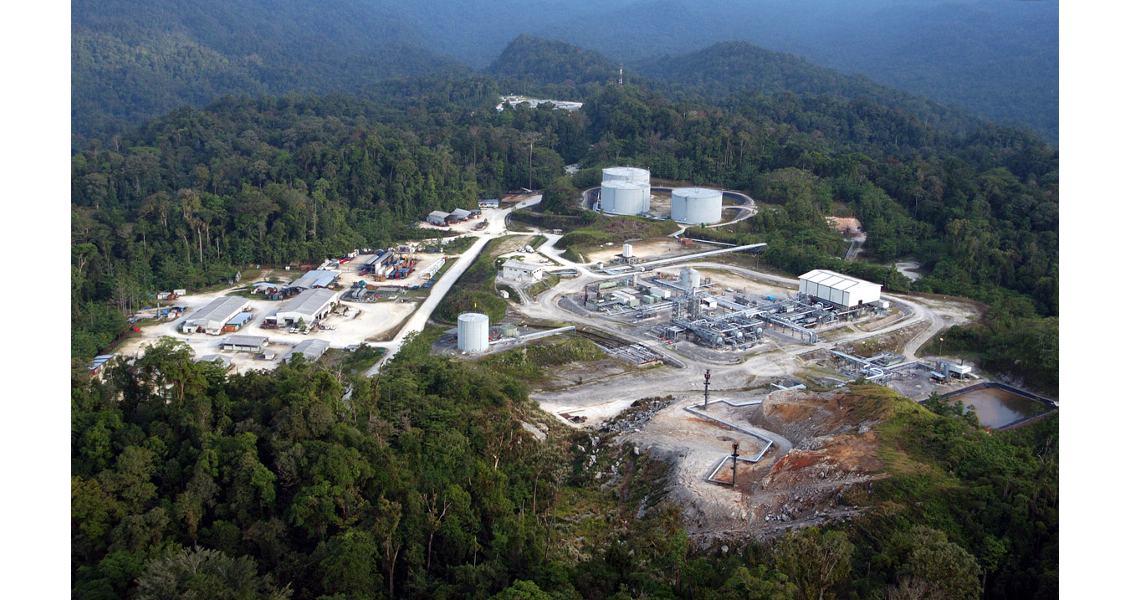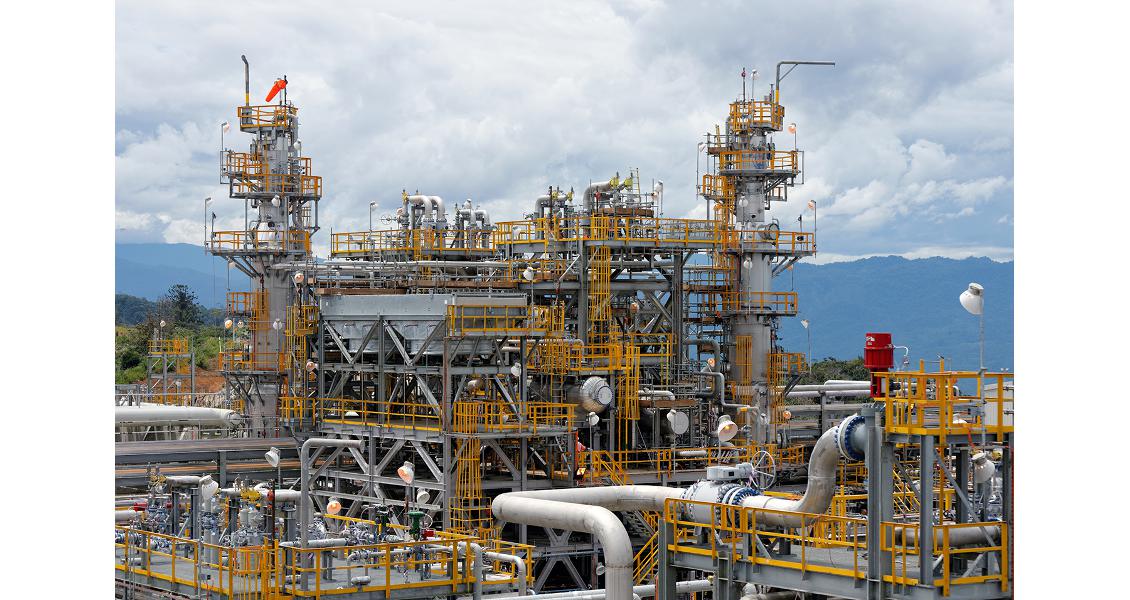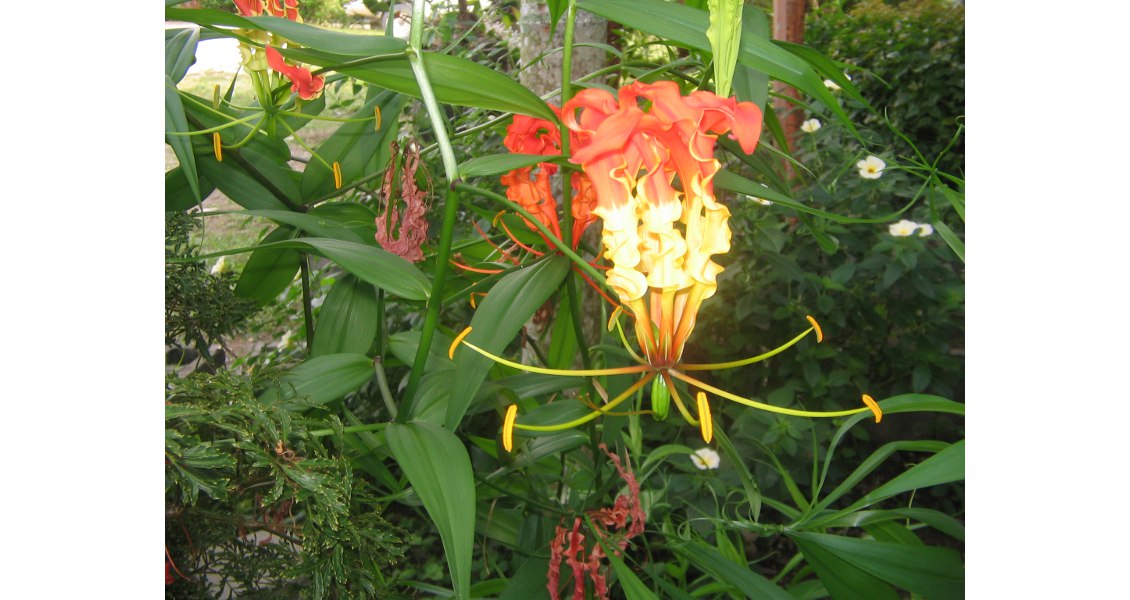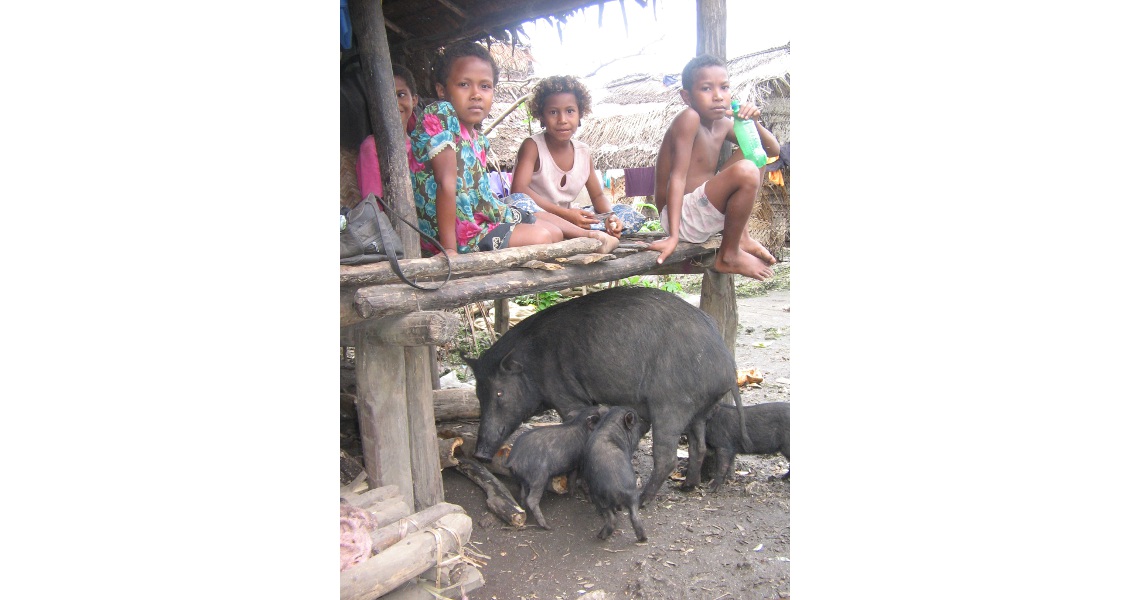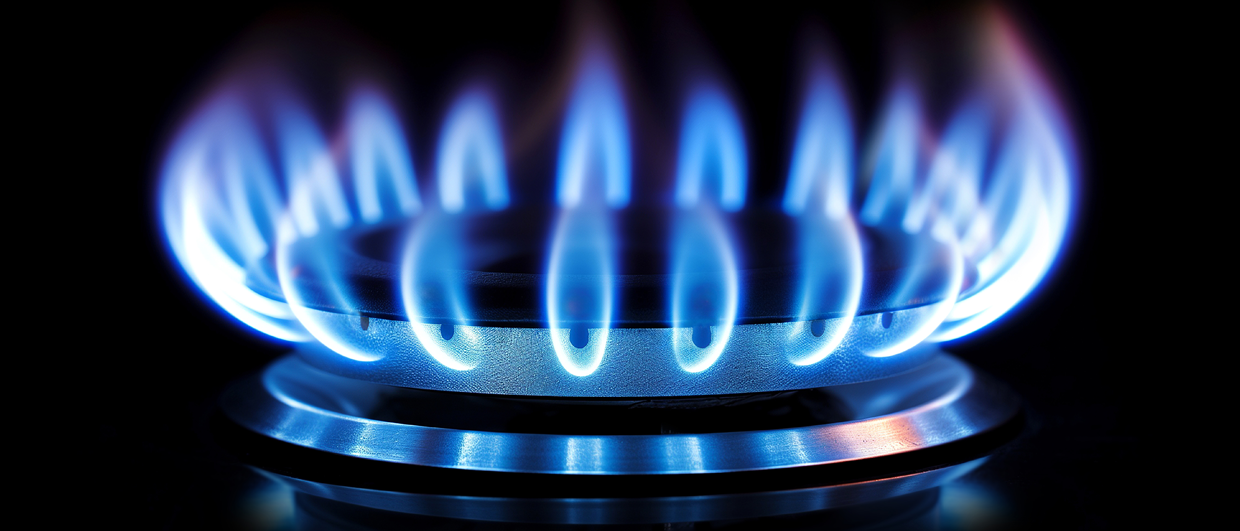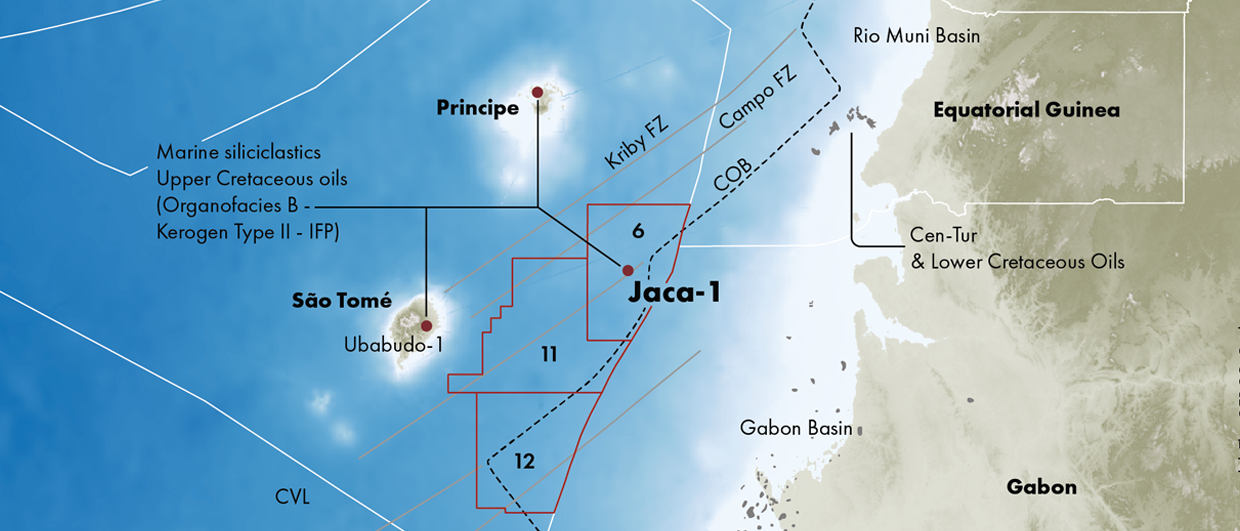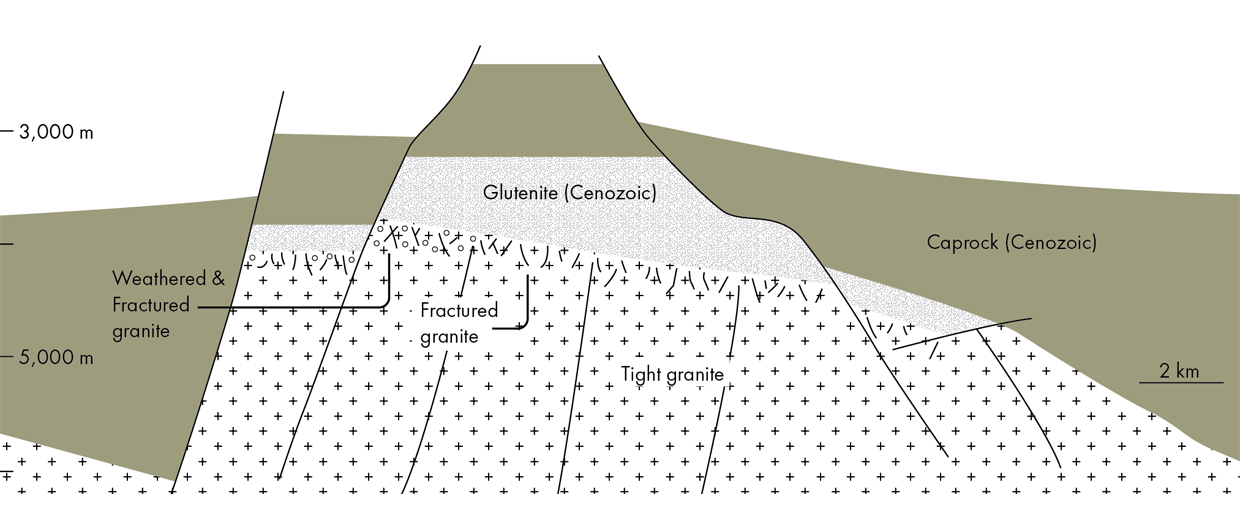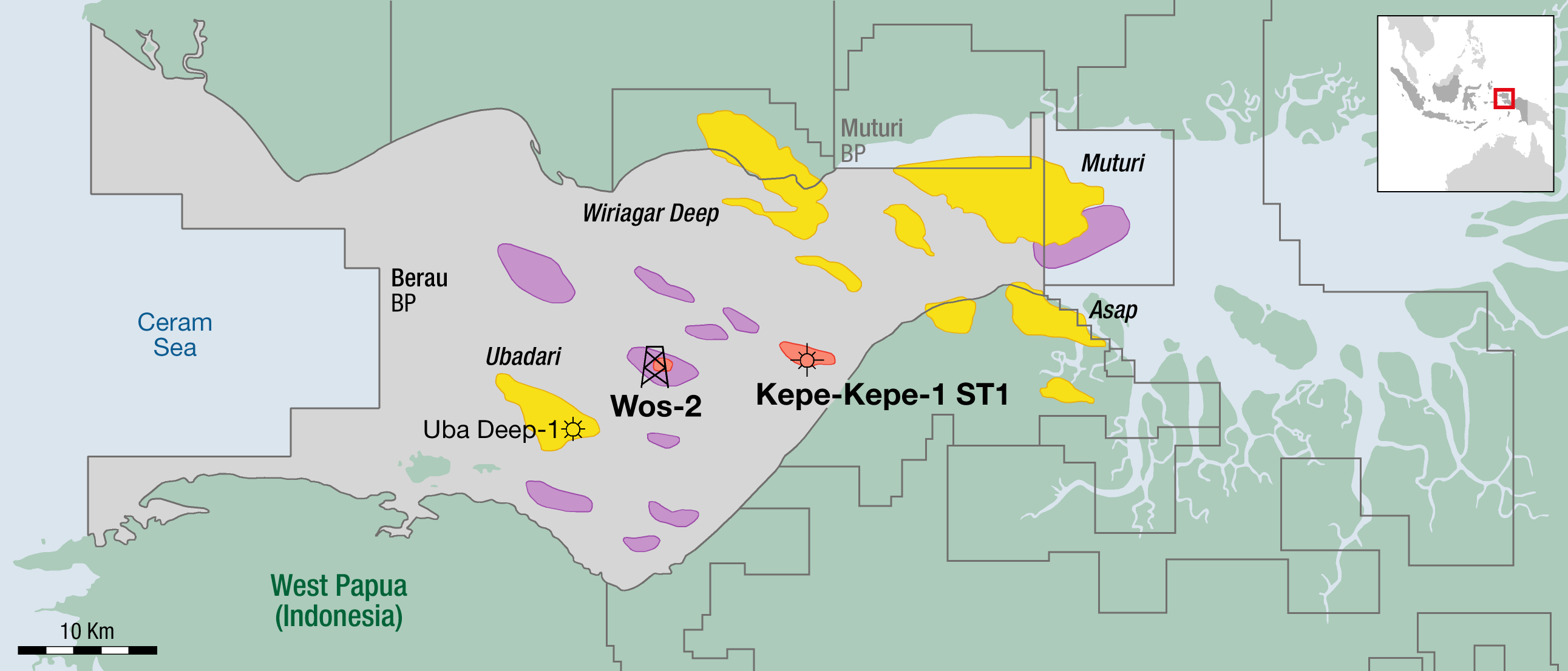The shift in attitude towards Papua New Guinea (commonly known as PNG) is largely thanks to ExxonMobil, which changed many long-held perceptions about exploration and development in the country when it brought PNG LNG on stream last year.
The US$19 billion project, which is based on more than 9 Tcfg in the Hides and Angore fields in the remote Highlands, shipped its first cargoes in April 2014, ahead of schedule and on budget. The two-train development was completed at around three-quarters of the cost of many new projects in neighboring Australia, debunking all notions that PNG was not just politically difficult, but carried a cost penalty because of its extreme and jungled terrain.
EnergyQuest chief executive officer, Dr Graeme Bethune, said the cost per tonne of capacity per year of the 6.9 million tonne per annum project was US$2,750, which was significantly lower than the US$3,000 to US$3,500 range of recent Australian projects.
“Interestingly, PNG LNG has been delivered at a cost close to the original budgets of the Australian projects. Gorgon was initially a US$37 billion project to deliver 15MMtpa, or US$2,460/tpa. Some of the reasons advanced for PNG being cheaper are that it is stick-build with 50% cheap local labour and no unions. It’s an impressive achievement given the logistical nightmare of working in the Highlands, where they had to build an airport with a three kilometer-long runway.”
Bethune added that PNG was also attractive relative to the newly emerged LNG project destinations of Mozambique and Tanzania. “It doesn’t have as much gas, but PNG has now established a good track record in LNG development,” he said.
Key Factors All Present
 Julian Fowles, Executive General Manager of Oil Search.Attention has now turned back to PNG’s prospectivity, which is just as dramatic as the country’s mountainous landscapes. Someone who understands the country’s oil potential better than most is Julian Fowles, executive general manager of the PNG business unit for the PNG independent oil company Oil Search, which is a 29% partner in PNG LNG and has been actively exploring in the country for decades.
Julian Fowles, Executive General Manager of Oil Search.Attention has now turned back to PNG’s prospectivity, which is just as dramatic as the country’s mountainous landscapes. Someone who understands the country’s oil potential better than most is Julian Fowles, executive general manager of the PNG business unit for the PNG independent oil company Oil Search, which is a 29% partner in PNG LNG and has been actively exploring in the country for decades.
Fowles said PNG brought together a number of factors that all petroleum explorers looked for. “One of the key features is having a good regional source rock that will produce hydrocarbons. It has to be mature, and part of a system that allows hydrocarbons to migrate into good reservoir rocks, and sealed with a good shale or seal horizon that is thick enough and continuous enough to hold significant oil or gas columns. In the main areas we focus on, which is the broader Papuan Basin running all the way from the Highlands into the Gulf of Papua, all of these things come together very well. It has an additional level of petroleum geological interest because parts of the basin have been folded through regional plate tectonic action into very large structures. The fundamental forces shaping the geology have formed these big traps, which is where the hydrocarbons are now found. Hides, Kutubu and Moran are all examples of very large, elongate anticlines formed in this way.”
He added that even though parts of the Papuan Basin are quite deformed, the regional seal has sufficient continuity to create very large traps.
The main source rocks range from about 140 million to 200 million years old, while the major reservoir is the 125-million-year-old Toro sandstone – a widespread unit with very good porosity and permeability. The excellent quality of the reservoir, together with the large hydrocarbon columns, produced high flow rates of more than 200 MMcfgpd from the Hides field.
East of the central Highlands, the geology changes and the main reservoir units are altered limestones, aged just 10 million years or younger, also sitting beneath a thick shale seal. This petroleum play is seen in PRL15, which hosts the Elk and Antelope fields, the largest undeveloped gas resource in PNG and potentially containing over 7 Tcfg.
New Entrants
French supermajor Total is the biggest of the new players to be attracted to PNG’s rich petroleum potential. Total last year bought a 40.1% interest in the Elk/Antelope fields from InterOil for up to US$3.5 billion. This followed Oil Search’s acquisition of a 22.835% interest in the same project from Pac LNG for US$900 million.
Total is not the only oil major to have recently arrived in PNG. Repsol has taken a large position in Foreland licenses in the western provinces through its recent acquisition of Calgary-based Talisman. Among Talisman’s key assets in PNG are a 40% interest in the Stanley gas-condensate project, which is now operated by Repsol, and a 32.5% interest in nearby Elevala/Tingu/Ketu fields, operated by Australian independent Horizon Oil. Repsol’s move follows the acquisition of interests in the projects last year by Osaka Gas.
Repsol, Horizon Oil and their partners are building flexibility into their development concepts so they have the option of capitalising on a number of potential options. Positions in the industry are fluid, and exploration success is changing the stakes on a regular basis. For example, Elevala/ Tingu/Ketu could be developed as a mid-sized floating LNG project, or as a supply of gas for new trains at PNG LNG or other proposed LNG projects.
Exploration and appraisal activity is on the upswing on a number of fronts, with about US$500 million expected to be spent on drilling in 2016 in and around the P’nyang field and surrounding licenses, lying some 100 km west of Hides.
Australian independent, Santos, is one of the most active companies in lifting its exploration and investment in PNG, where it has been operating since the late 1980s. The company is a 13.5% stakeholder in PNG LNG and is keen to increase its position. It has farmed into three permits now operated by Repsol, and has acquired a 50% interest in PPL 269 from Kirkland for an initial payment of US$32 million.
Logistical Issues
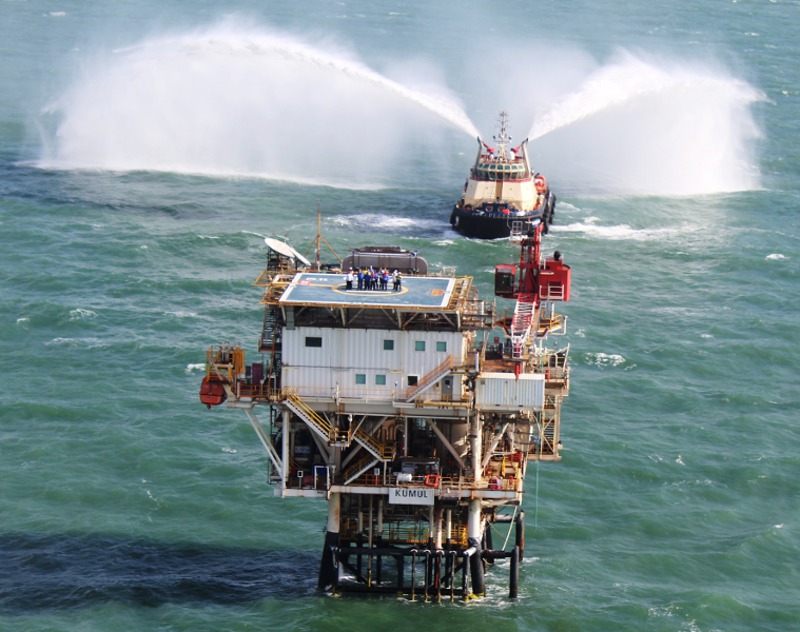 Kumul Marine Terminal. The Platform, is approximately 45 km offshore. A 13-person crew resides at the KMT in a 28-day back to back rotation, and two support vessels facilitate tanker loading. KMT has been operating since 1991, and now fills about three tankers a month. Each tanker holds about 650,000 barrels of oil, which takes about three and a half days to fill.As an experienced PNG explorer, Fowles knows that new entrants face additional challenges compared to typical petroleum basins. He said that exploration in PNG could be difficult because of the impact on logistics and operations of its remoteness, ‘horrendous’ climatic conditions at certain times of the year and very rugged terrain. Established in 1929 in PNG, Oil Search has built a logistical backbone that helps to minimize many of these challenges. “We have a well established base in Moro in the Highlands that allows us to access very remote areas. The logistics can be challenging, but we have that under control. From a geological perspective, the complexity is a factor, and combined with the very rugged surface conditions it can be difficult to get the sort of seismic quality that you would typically gather offshore.” The company routinely uses palynologists on its well sites to provide realtime checks of actual versus expected stratigraphy. They are particularly valuable in dramatically folded Highland terrains, where it is not unusual for formations to be overturned.
Kumul Marine Terminal. The Platform, is approximately 45 km offshore. A 13-person crew resides at the KMT in a 28-day back to back rotation, and two support vessels facilitate tanker loading. KMT has been operating since 1991, and now fills about three tankers a month. Each tanker holds about 650,000 barrels of oil, which takes about three and a half days to fill.As an experienced PNG explorer, Fowles knows that new entrants face additional challenges compared to typical petroleum basins. He said that exploration in PNG could be difficult because of the impact on logistics and operations of its remoteness, ‘horrendous’ climatic conditions at certain times of the year and very rugged terrain. Established in 1929 in PNG, Oil Search has built a logistical backbone that helps to minimize many of these challenges. “We have a well established base in Moro in the Highlands that allows us to access very remote areas. The logistics can be challenging, but we have that under control. From a geological perspective, the complexity is a factor, and combined with the very rugged surface conditions it can be difficult to get the sort of seismic quality that you would typically gather offshore.” The company routinely uses palynologists on its well sites to provide realtime checks of actual versus expected stratigraphy. They are particularly valuable in dramatically folded Highland terrains, where it is not unusual for formations to be overturned.
Oil Search’s exploration activity was traditionally focused near existing fields and infrastructure, where new reserves can be brought into production at lowest cost. The Hides Deep play was a good example of this strategy, although it failed to locate a deeper economic reservoir. Following the start-up of PNG LNG, Oil Search has adopted a more aggressive approach, reflecting the need to replace the accelerated reserve drawdown, as well as growing confidence in the petroleum potential of the country. Oil Search is on the record as saying it believes that only half of the nation’s estimated resource potential of 10 Bboe has been discovered to date.
The company is also stepping out along strike from the Elk-Antelope discoveries. It recently acquired a 70% operated interest in PPL 339 and is planning to drill in 2016, chasing the reefal play on trend with the Elk-Antelope gas field.
PNG Economy
A highly supportive national government is another key factor behind the accelerating growth of PNG’s petroleum industry. The government of Prime Minister Peter O’Neill has long understood the economic boost that can flow from major resource projects thanks to mines such as Bougainville copper and Porgera gold mine. But petroleum wealth is taking the country’s economic development to another level, as shown by a World Bank forecast of 15% growth in GDP in 2015, thanks largely to the start-up of PNG LNG.
The government is doing everything it can to promote the further expansion of its petroleum industry. PNG’s low costs for constructing LNG facilities mean there has been no slowdown in development plans, despite last year’s oil market collapse and the subsequent decline in oil-linked LNG prices.
The first item on the government’s agenda is the addition of a third train at PNG LNG, boosting capacity to more than 10 million tonnes per annum. In January, 2015, the PNG LNG partners reached agreement with government to supply electricity and gas for the domestic market. As part of the deal, government is clearing a path for the development of the P’nyang field in the Western Highlands as a supply source for a third train. A final investment decision is to be taken by the end of 2017 at the latest.
Planning for the P’nyang-4 appraisal well is underway, with drilling targeted for early 2016. The PRL3 partners are confident of potential for a material increase in proven contingent resources, which already stand at over 1 Tcfg. The P’nyang field is also believed to have big upside, with a number of leads and prospects with potential for the discovery of several trillion cubic feet of gas.
The country is also racing ahead with its second LNG development, based on the Elk-Antelope fields in PRL15. The new partners in PRL15 – Total, Oil Search and Interoil – announced in July 2015 that Elk-Antelope would be the basis for Papua LNG, adjacent to the ExxonMobil-operated PNG LNG facilities near the capital, Port Moresby. The partners are appraising the field by drilling up to three new wells in 2015, with a view to selecting the development concept by early 2016, with first LNG cargoes expected in 2021.
The government is also spring cleaning its inventory of petroleum exploration licenses and expects to re-issue up to 20 permits that have not been kept in good standing by permit holders. The country’s minister of petroleum and energy, Nixon Duban, has reportedly said that major companies, including ExxonMobil, are lining up for the reissued permits, which would inject significant new exploration spending in the country.
PNG governments have also worked hard to ensure a globally competitive fiscal regime for petroleum investment. Wood Mackenzie rated the PNG regime as ‘favorable’ in its latest global benchmarking assessment, and on par with the likes of Australia, the UK and the Philippines. With all this going for it and a substantial natural endowment of hydrocarbons, PNG can be expected to continue its rapid rise as a petroleum country of real standing.

